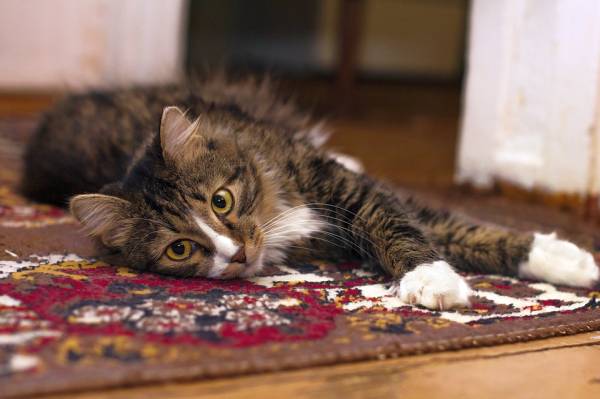
Our poor house cats are getting contaminated by toxic dusts from brominated flame retardants in our homes.
A recent study from Stockholm University has verified previous findings that high levels of brominated flame retardants measured in cats are from the dust in our homes.
Brominated flame retardants are added to things like electronic equipments, furnitures and textiles to keep them from catching fire in our homes.
These brominated flame retardants break down over time and become part of the dust in our homes.
House cats spend most of their lives indoors, so they are exposure to these potentially toxic dusts.
In this study, researchers took paired samples from the same household. In other words, they took both dust and blood samples from cats at the same time in the same house.
Bad Stuff in Cats’ Blood
They found high levels of brominated flame retardants measured in the blood of these cats. Moreover, cats with high levels of brominated flame retardants were likely to have Feline hyperthyroidism (hyperthyroidism in cats) compared to healthy cats.
“By taking paired samples, we have greater insight into the environment that the cats live in. Moreover the cats in the study spent the majority of their time indoors and therefore air and dust in the home is expected to contribute more than the outdoor environment,” the researchers said.
Watch the Kids Too
One serious implication of this study is for children. Children tends to put everything in their mouths, exposing themselves to these chemicals also.
The researchers said, “The brominated flame retardants that have been measured in cats are known endocrine disruptors. It’s particularly serious when small children ingest these substances because exposure during the development can have consequences later in life, such as thyroid disease.”
This is one important issue to pay attention to if you have children. Brominated flame retardants persist for a long time, and these chemicals will leach out and become part of the dust in our homes.
Beware of toxic house dusts for your kids’ and cats’ sakes!
Journal Reference:
J. Norrgran Engdahl, A. Bignert, B. Jones, I. Athanassiadis, Å. Bergman, J. M. Weiss. Cats’ Internal Exposure to Selected Brominated Flame Retardants and Organochlorines Correlated to House Dust and Cat Food. Environmental Science & Technology, 2017. http://dx.doi.org/10.1021/acs.est.6b05025


